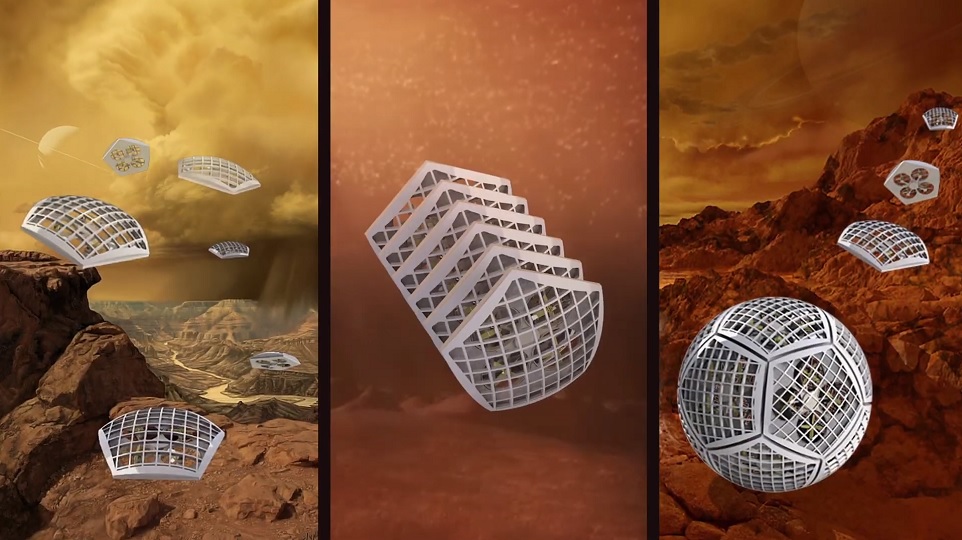NASA shared to the public a glimpse of its Shapeshifter project. The program aims to develop shapeshifting robots that will be sent to explore planets and moons within our Solar System in the future.
On Wednesday, the U.S. space agency revealed a 3D-printed prototype “Shapeshifter,” describing it as a contraption similar to drone encased in an “elongated hamster wheel.” The robot rolls on the ground then splits in half.
In a press release, the NASA Jet Propulsion Laboratory explained:
“Once separated, the two halves rise on small propellers, effectively becoming flying drones for aerial exploration. These 3D-printed parts are only the beginning; the team imagines a series of up to 12 robots that could transform into a swimming probe or a team of cave explorers.”
The NASA engineers envision their Shapeshifters or “cobots” to detach from and reunite with each other automatically. Meaning, intelligent robots that could unite to form a rolling sphere or split and become flying drones for exploring cave systems.
Sending Shapeshifting Robots to Saturn’s Moon Titan
Before its farewell dive into Saturn, the Cassini spacecraft flew by Titan countless times. It mapped the massive moon’s surface for future missions.
During its flybys, the Cassini mission discovered Titan’s similarities and key differences with Earth. Titan has cold rivers, lakes, and it rains liquid methane and ethane on the moon.
Scientists believe that Titan could potentially sustain life and that its thick, hazy atmosphere conceals caves or volcanoes that might be spewing water instead of magma. However, data gathered by Cassini are not enough to study the surface of Titan fully.
Ali Agha, a JPL Principal Investigator, said:
“We have very limited information about the composition of the surface. Rocky terrain, methane lakes, cryovolcanoes – we potentially have all of these, but we don’t know for certain. So we thought about how to create a system that is versatile and capable of traversing different types of terrain but also compact enough to launch on a rocket.”
Agha and his co-investigators came up with the concept of using cobots to explore Titan. Their ultimate vision includes using a lander, like the Huygens Probe deployed by the Cassini spacecraft as it passed by Titan, to send their cobots on the said moon.
Because of Titan’s environment, the researchers believe that the cobots could easily lift a lander and move it to different locations. Jason Hofgartner, the JPL lead scientist for the Shapeshifter project, added:
“It is often the case that some of the hardest places to get to are the most scientifically interesting because maybe they’re the youngest, or they’re in an area that was not well characterized from orbit. Shapeshifter’s remarkable versatility enables access to all of these scientifically compelling places.”



















Comments (0)
Most Recent